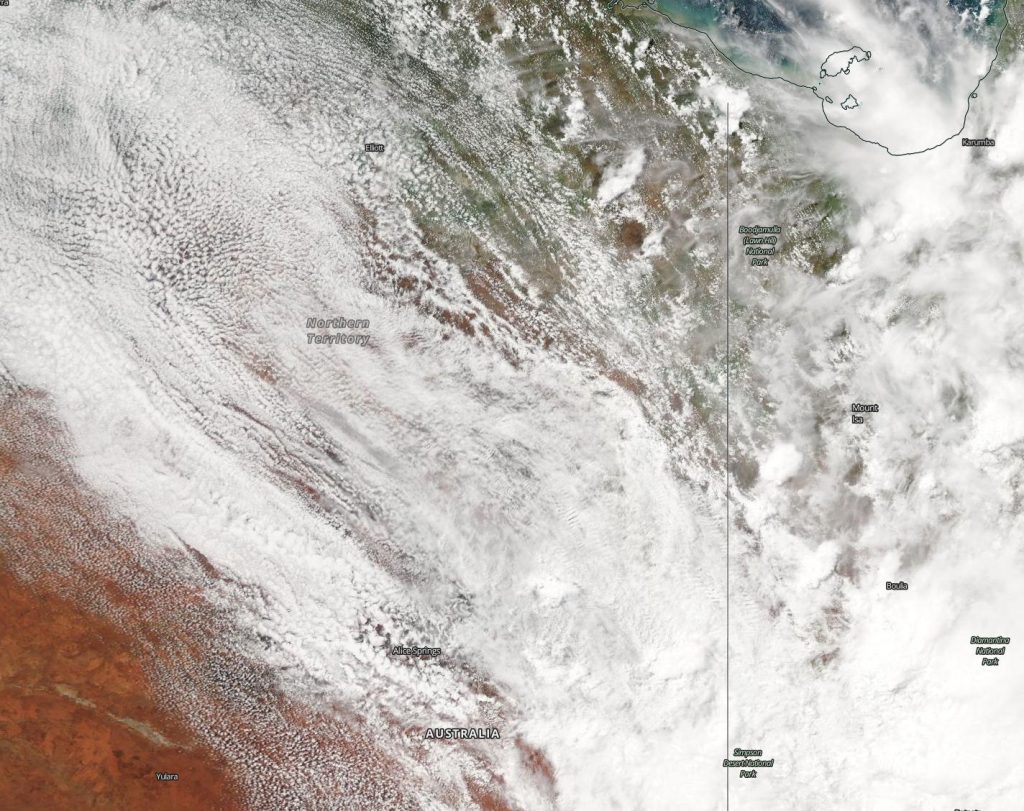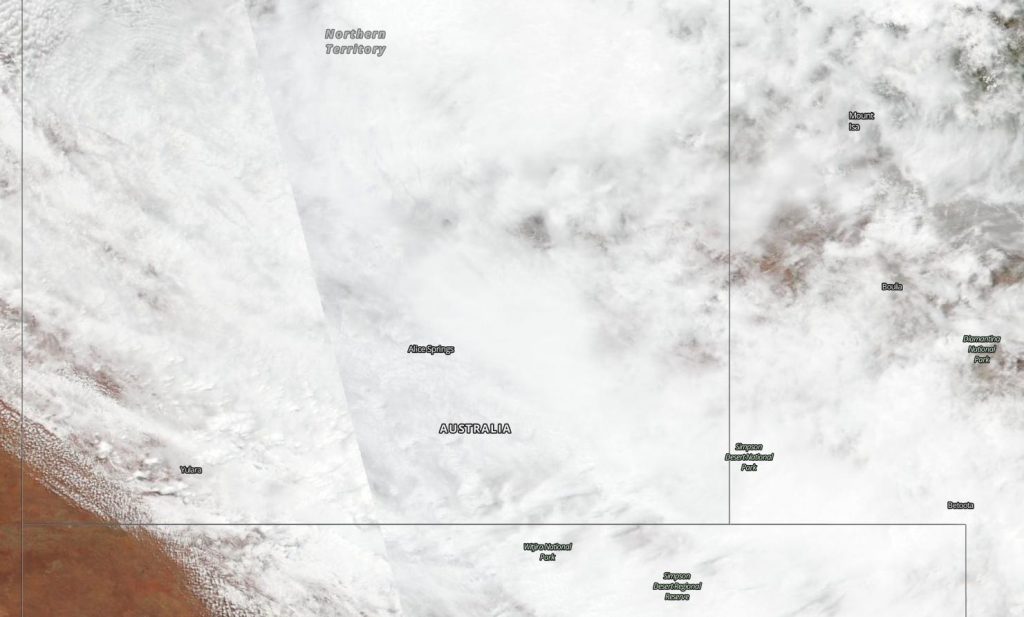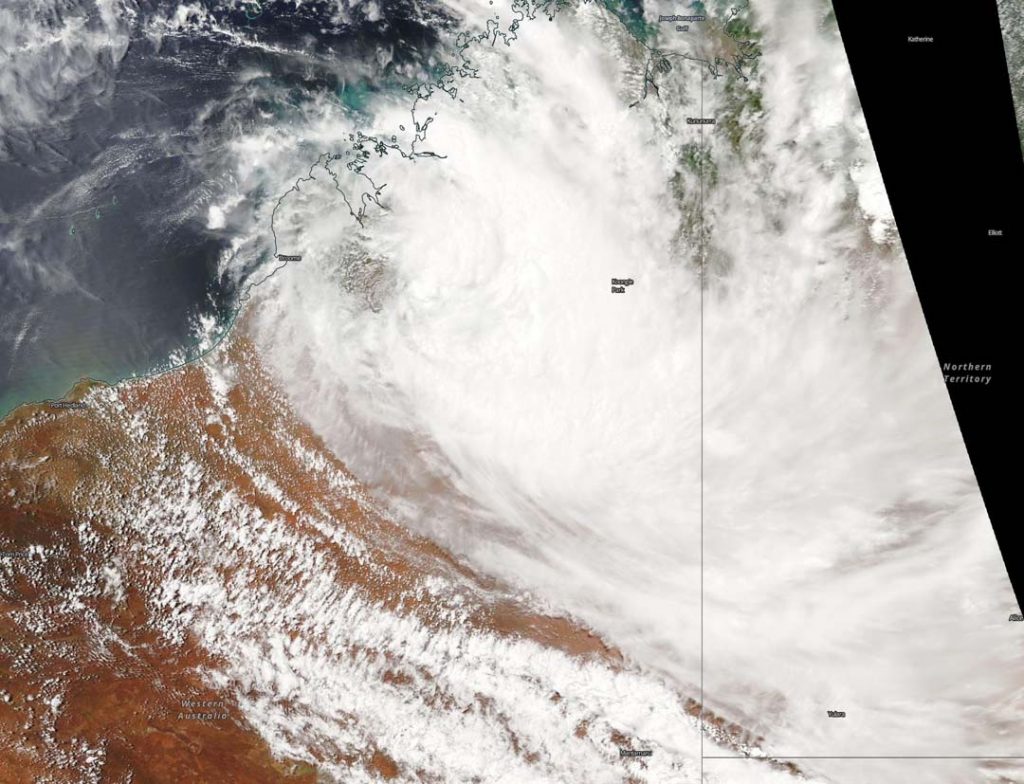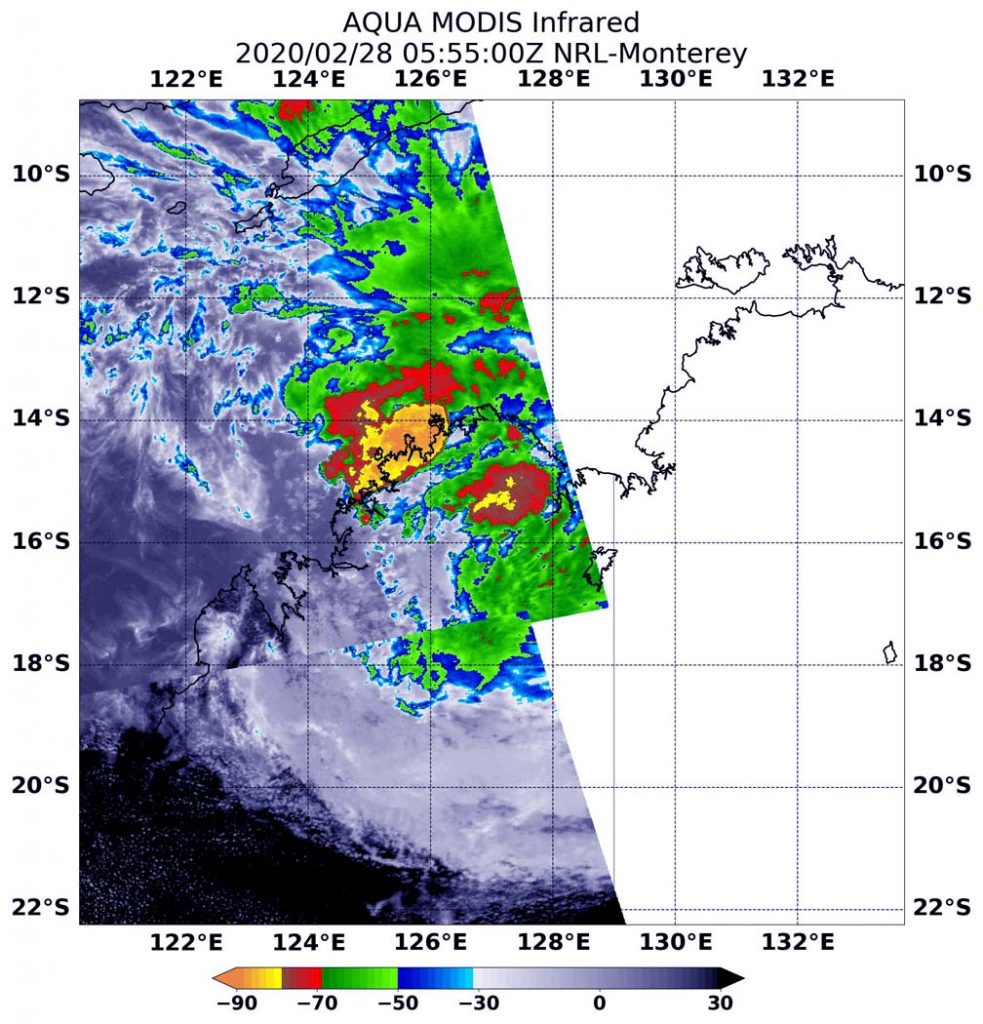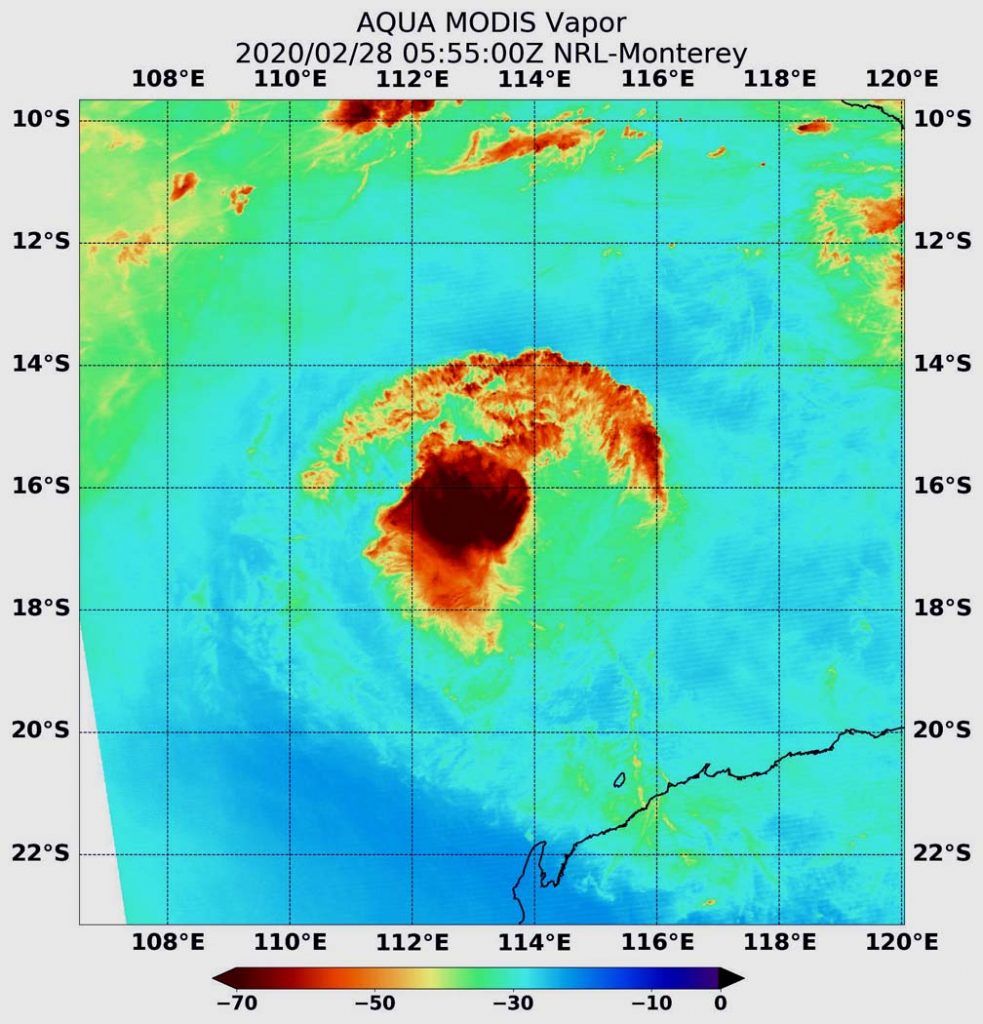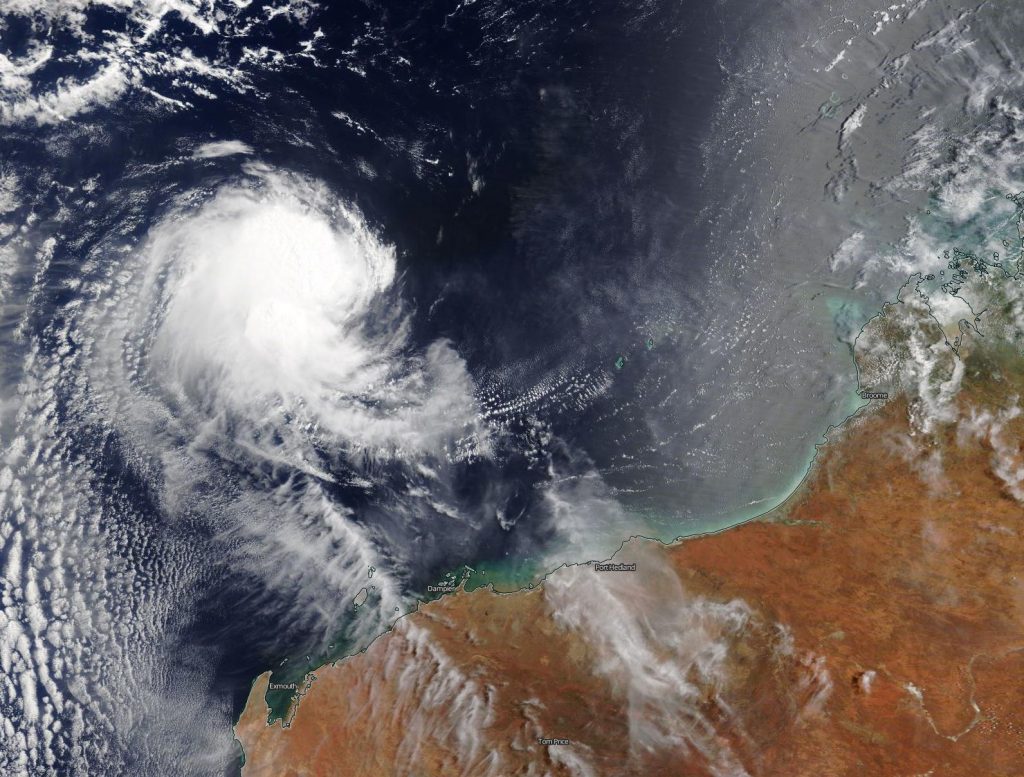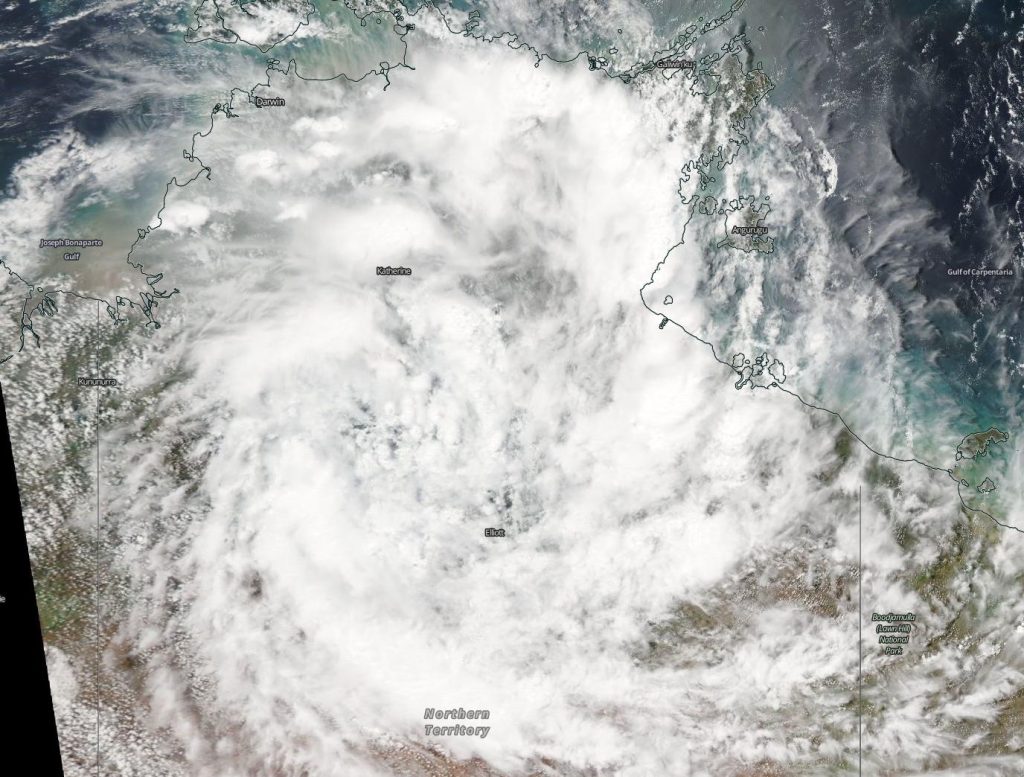Mar. 12, 2020 – NASA Finds Ex-Tropical Cyclone 21S Affecting Australia’s Pilbara Coast
NASA’s Terra satellite passed over the Southern Indian Ocean and provided forecasters with a visible image of Ex-Tropical Cyclone 21S. Although no longer a tropical cyclone, the system has triggered warnings for heavy rainfall and winds.

Tropical cyclone 21S was along the Pilbara coast. The Pilbara Coast is also known as the northwest coast of Western Australia.
The final warning from the Joint Typhoon Warning Center (JTWC) on 21S as a tropical system came on Mar. 11 at 5 p.m. EDT (2100 UTC). At the time, it had maximum sustained winds near 35 knots (64 kph/40 mph) and was moving to the southwest and toward the coast of Western Australia.
On March 12, the Moderate Resolution Imaging Spectroradiometer or MODIS instrument that flies aboard NASA’s Terra satellite provided a visible image of 21S that showed the storm affecting the states of Gascoyne and Pilbara. The image showed the low-level circulation center still offshore and the bulk of clouds and precipitation over Western Australia.
The Australian Bureau of Meteorology (ABM) issued warnings. ABM said, “Severe Weather events are forecast to affect Exmouth, Onslow, Barrow Island and Coral Bay. Along the northwest Pilbara coast between Mardie and Coral Bay, sustained gales are possible from late this evening until Friday morning. The weather system may also cause damaging wind gusts to 100 kilometers per hour that could result in damage to homes and property in or near thunderstorms. Heavy rainfall that may lead to flash flooding is possible with isolated falls of 50 to 100mm [`2 to 4 inches].”
At 4:00 p.m. AWST (4 a.m. EST) on Mar. 12, the ABM said ex-tropical cyclone 21S was located about 150 km (93 miles) north of Onslow, moving south southwest. ABM forecasters indicated the low-pressure area is expected to reach the coast later on Thursday or early Friday and may travel parallel to the Gascoyne coast. The tropical low-pressure area is not expected to intensify into a tropical cyclone but is likely to cause a period of heavy rainfall and squally winds.
NASA’s Terra satellite is one in a fleet of NASA satellites that provide data for hurricane research.
Tropical cyclones/hurricanes are the most powerful weather events on Earth. NASA’s expertise in space and scientific exploration contributes to essential services provided to the American people by other federal agencies, such as hurricane weather forecasting.
For updated forecasts from ABM, visit: http://www.bom.gov.au/


